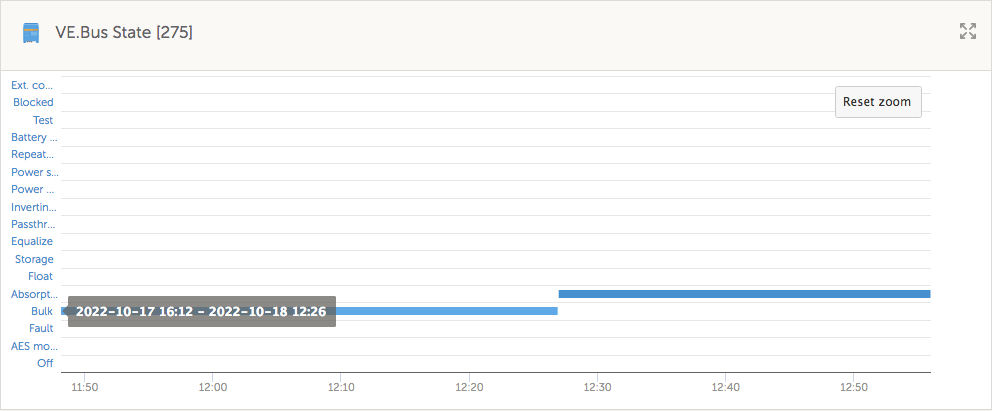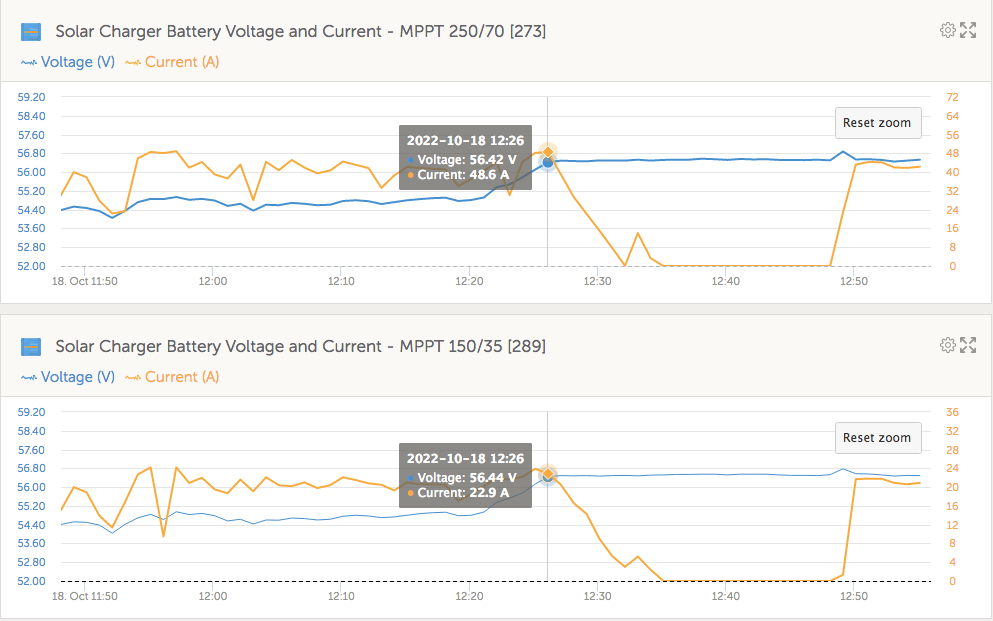MPPT turns off for 20 minutes when battery switches to absorbtion.
What is the reason for that?


DC power can be sent to grid because DC feeding is allowed.
When I reboot GX, MPPT production resumes earlier that if I do nothing.
This site is now in read-only archive mode. Please move all discussion, and create a new account at the new Victron Community site.
MPPT turns off for 20 minutes when battery switches to absorbtion.
What is the reason for that?


DC power can be sent to grid because DC feeding is allowed.
When I reboot GX, MPPT production resumes earlier that if I do nothing.
Hello @MarekP ....your batteries don't switch to absorption, your VE.Bus charger switches to absorption. When that happens the terminal voltage of the batteries increases and the charging voltage of the MPPT solar charger no longer is sufficiently higher than the battery terminal voltage for any current to flow. Hence the current drops to zero. Within 20 minutes the Maximum Power Point Tracking algorithm re-evaluates the best voltage and current point to charge the batteries and when it resets starts charging the batteries again. When you reboot Gx it starts the MPPT evaluation immediately and gets their faster for that reason.
It could be the case but MPPT solar charger is under "external control". Is it still doing this evaluation when under external control?

The PV voltage is way higher than battery voltage so there should not be a problem with too low voltage.
Charging voltage is rising slowly and MPPT solar charger is following voltage demand. Only when absorption stage kicks in both MPPTs are switching slowly OFF. There is no sudden voltage increase at point of switching to absorption.
I do not think MPPT needs 20 minutes to reevaluate anything.
@MarekP ...External control provides basic instruction to the controller. It doesnt control the MPPT tracking. It doesn't take 20 minutes to evalauate the MPPT point. It normally takes about 30 seconds to evaluate that tracking point and that normally happens every 10 minutes. I canot explain why it is taking 20 minutes and not 10 minutes and can only assume it is becasue it si under external control. When you say gradually change, it is hard to know that given the default update interval for VRM unless you have changed that.
But there is no reason for MPPT tracker to loose control.
Battery voltage is the same before and after the point of changing from bulk to absorption.
Also two different and separate MPPT behave the same.
What kind of batteries? What I see looks like normal behavior for Lithium batteries.
Basically, the controller stops pushing current because your batteries are full, or so close to that they can not be safely charged any further.
Additional resources still need to be added for this topic
30 People are following this question.